Final report for FNC16-1065
Project Information
We have an urban farm on 1 acre in the heart of Independence, MO. We are presently growing on 1/2 an acre. We grow produce in many different ways and teach other gardeners/urban farmers how they can grow produce in a small area by growing up instead of out. In an urban setting, land is valuable so we need to us our ground space wisely. Our project is to try many types of gardening techniques that are all over the internet and see which ones work and don't work for urban growers/farmers. We work with a lot of low income growers and teach gardening classes in the urban setting. We will be starting our 4th growing season this March on the farm. Before we started our project we had just bought our farm the previous year, however we have been growing produce and flowers for over 25 years. For this period we were only growing produce for ourselves and flowers for our business. When we moved into the city and into the low income area of town, we had already been working with the inner city community, helping them grow produce and sell it at their local farmers market. We knew that we wanted to expand our knowledge and teach gardening practices that we had learned over the 25 years, and help more in our community to grow healthy food for their selves and for their community. We knew we could not just teach the traditional methods of gardening. For example, when a single 35-year-old who makes $20,000 a year and lives in a small house with a 50 ft. x 60 ft. yard needs to grow more produce to feed herself and bring in more income, new methods are needed. We have used traditional methods, organic practices, square foot gardening and companion planting for years. With this project we looked at a lot of gardening practices that are all a buzz on the internet the last few years and measured the success of each approach with space, time spent to plant and care for, watering techniques, harvest amounts. We look at different techniques of growing for different age groups and family sizes.
2016. Overall this year was a great year! We taught over 40 individuals about growing produce in an urban setting. We ourselves learned several things... what we need to do to improve milk crate gardens and who to target for them. We learned a lot more about potato towers and things we will try differently next year. We learned how easy and effective it is to grow up instead of out. Even a 10 lb. squash can be grown up; next year we will be aiming for 20 lbs. on a trellis system. With getting the sample/teaching garden done we will be able to do workshops right at the garden and people will be able to see what the different methods should look like when they are done. We will be able to work with 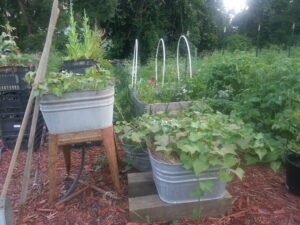 SARE Grant for Pepper Berries Urban Farm 2 individuals on the best way for them to grow produce to bring in extra income by suggesting and helping them build non-traditional gardens to get the most produce that they can in a small area.
SARE Grant for Pepper Berries Urban Farm 2 individuals on the best way for them to grow produce to bring in extra income by suggesting and helping them build non-traditional gardens to get the most produce that they can in a small area.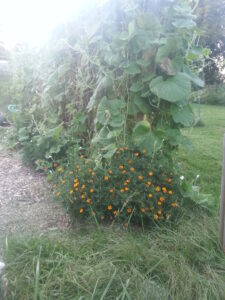
Growing Potatoes Growing Potatoes slide show Garden classes Farm to Table Dinner and Workshop
Our objective was to teach growers/farmers in an urban setting how to grow vertically instead of horizontally. For our first year we accomplished a lot. We started with removing a tree in the center of a 40 x 60 foot area that would be our sample/teaching garden. We build a 25 ft. x 8 ft. wall for vine crops to grow on out of 2x4s, post and wire. This is a wall that could easily be built along a garage or house. We only planted 2/3 of it this year and harvested on average 50 lbs. a week of cucuzza squash. We also built a trellis system using cattle fencing and t-post 8x8. We grew cushaw squash on this trellis. We let then get to 10 lbs. this year, next year we will let some of them mature to 20 lbs. and see how they do growing up the trellis. We also had 2 milk crate gardens that were stacked 3 high. One was a strawberry garden; the other was a garden with greens and a tomato on top. We put in container gardens with sweet potatoes, turmeric and also tomatoes, cucumbers and Swiss Chard. We will be doing the same thing again this year with some modifications. We changed our potato towers from the 2015 year to be smaller and changed the way we grew them this year to see if we could get better yields. This next year we will be doing them both ways plus a third way to see the yields. All of the experiments will be done again plus we will be putting in some of the systems that we didn't get to this year such as hay bale, 50 gallon containers, gutter gardens and pallet gardens. We will be able to look at all these different methods and compare the results and be able to teach growers/farmers in an urban setting the best methods to use for their growing situation. For our potato towers we are discouraged with the results so far but with the changes that we have planned for next year, we are hoping for a great yield.
Cooperators
- (Educator)
- (Educator)
- (Educator)
- (Educator)
- (Educator)
- (Educator)
- (Educator)
- (Educator)
Research
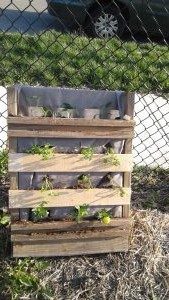
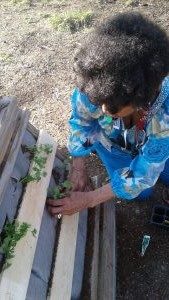
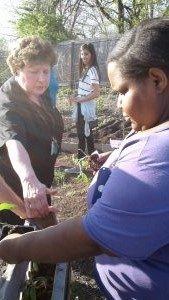
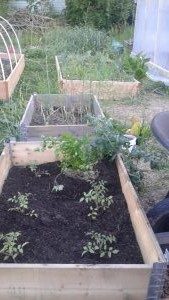
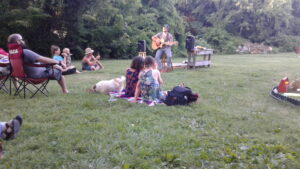
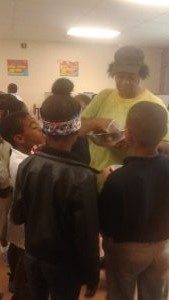
Impacts
2016, The impact that we accomplished this year was teaching and helping over 40 individuals to grow where they are in the inner city through classes, workshops and farm work. We also explained to many people at the farmers markets about how to grow something, shared with them our classes and talked to them a lot on growing right where they are. We taught one of the classes at a Senior Apartment complex where we had 15 attend the class. We provided tomato, eggplant, kale, lettuce and pepper plants for them to grow in the milk crate gardens for their patios. With follow up on these individuals and continuing to mentor and instruct these individuals we can expect more produce to be sold at farmers markets, more produce available right out their back doors.
2017, We had a good year teaching and instructing over 65 growers/farmers in our hands on classrooms. The classes were potato gardens, pallet gardens, container gardens, companion planting in raised beds. We also taught 32 children in classes on how to grow produce in a container garden, Mr. Potato Head and Companion planting in containers.
 Kids-Gardening-Classes-for-Spring-2017
Kids-Gardening-Classes-for-Spring-2017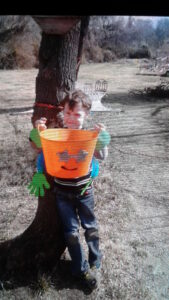 Grow-your-Garden-Grow-your-Pantry3-times-3-Container-GardeningGarden-classes1
Grow-your-Garden-Grow-your-Pantry3-times-3-Container-GardeningGarden-classes1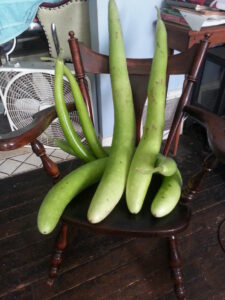
Accomplishments
2016, We accomplished so much this year.... The sample/teaching garden was almost completed. We taught 6 classes on gardening in an urban setting, (potato growing, strawberry milk crate towers, milk crate gardens, container gardens). We had a total of 45 participate in them. We also helped 6 growers/farmers build a garden. We provided and helped build 4 potato towers in 2016; 2 of the recipients sell produce at Ivanhoe Farmers Market. We provided 1 young family who live in a duplex with 2 milk crate gardens; 1 was a strawberry tower, 1 was greens and tomato plants. We provided and helped put together a greens garden on a fence and 2 container gardens for a young college man in the inner city who lives in an apartment building. We gave away 3 potato bags and helped 1 person with the dirt and potatoes for the bag.
We had the privilege to speak several times and share our project with many individuals. First we were able to have a booth for free at the Santa-Cali-Gon Days Festival, 6 blocks from our home. We were there 2 full days from 8 am to 10 pm. We talked and shared our vision with so many who were really interested in how we are trying to help low income growers/farmers in our community. We talked to well over 125 individuals and had 76 sign up for our newsletter that we will start sending out monthly 1/1/17. We also spoke at a SARE workshop that was put on by the University of Missouri and Lincoln University. We also were able to speak at a Beginning Homestead Series put on by University of Missouri.
We put in 16 Blackberry plants and put 1 in a container, planted 10 blueberry plants and 1 in a container. We did get 3 grape vines in but still need to plant a container one. We did a lot of companion planting, container planting and traditional planting to measure the results of our project next year.
We had 4 individuals who came out to the farm to help us out and learn how to grow in a small area. One young lady came 2 times a week faithfully from May - August; another one came for 6 weeks and learned how to plant. A young man came out 3 times and learned about maintaining the gardens and harvesting. Another young lady came out and helped plant and harvest one afternoon.
2017, We accomplished so much...we had adult and children gardening classes. Worked with 15 urban gardeners/farmers. Spoke at numerous conferences, workshops and classes. We handed out hundreds of "how to" worksheets on growing potatoes, onions, squash, and tomatoes plus instructions/worksheets on how to grow in a small area. We had classes on different styles of gardening for an urban setting: hay bale, pallet, milk crate, container, box, raised beds, stealth, towers, 55 gallons, shoe bag gardening, PVC gardens, companion planting and Back to Eden gardens and wall gardens just to mention a few.
We had 17 volunteers throughout the season to help at the farm this year. We taught them how to plant, grow, tie back, prune, harvest and build beds. We had a concert and tour at the farm where 45 guests came out to enjoy a concert, make an herb garden, have a 45 minute tour and enjoy 5 dishes and 2 drinks all prepared from ingredients from the farm. Besides our concert/tour day we held over 12 tours for growers/farmers/entities.
We provided supplies to numerous growers/farmers to build different styles of urban gardening systems for their situations; everything from pallet gardens to tower gardens, milk crate gardens, bag gardens, container gardens, 55 gallon gardens, shoe bag gardening, etc. We supplied not only the structures but also soil and plants for these classes. Most of these classes were attended by low income growers/farmers.
In the sample garden, we planted sweet potatoes in containers, in the ground and in a tree stump. We planted turmeric and ginger in containers and in the ground. We grew tomatoes and squash on our 8-ft-tall wall where we also companion planted with beans and onions. We planted potatoes in towers, bags, square foot stackable wood gardens, containers and in the ground. We planted cucumbers in containers and in the ground with trellises. We grew tomatoes on fencing, on string, and with tomato cages and containers. We grew melons and squash on fencing and cattle fencing 4 ft. and 8 ft. tall. We grew herbs and greens in shoe bag gardens, containers, pallet, ground, raised beds, milk crate and 55 gallon gardens.
We learned several things about growing in the city with not a lot of land to use to harvest as much as possible. We really liked the 8 ft. fencing which can be put along the side of a house, shed or garage and grow anything up. It was very successful. We really liked the 55 gallon barrel; there was a lot of product in a 3 x 3 ft. area. We really liked pallet gardens for herbs or lettuce. For potatoes we did not like the towers; we just did not see good results with any of the towers that we used. We did like containers, bags and stackable raised beds. For sweet potatoes we found that container, ground or tree stumps all work very well. For tomatoes we had great results in any situation as long as the container was at least 2 gallons in size. For best results we liked the system of pruning to 1 or 2 vines on a string. Ginger and turmeric did very well in containers or the ground but for our zone 6b we had to dig up the rhizomes that were in the ground and bring in the plants in containers to finish out the season for 1 month.Harvest-Results-for-SARE-Report-2016-17
Educational & Outreach Activities
Participation Summary:
1: University of Missouri/Lincoln University SARE Grant Workshop 2016, approx. 35 farmers/growers. We prepared a power point, handouts and spoke for 30 minutes about our project, vision, how to write a grant. We also brought added value products from the farm for them to enjoy.
2: University of Missouri Homestead Classes 2016, 15 farmers/growers. We prepared a power point and spoke for 30 min. on starting a farm, applying for a grant and our project.
3: Cultivate KC Farmers & Friends 2017, approx. 1000 farmers/growers/guest. We were able to share our vision and project at the beginning of the day with handouts, power point and telling them about us, Then we broke into smaller groups and shared about how to write a grant and about our grant with SARE.
4: KC Healthy Kids 2016 & 17 Food Summit quarterly meetings. We catered 4 of these meetings and were able to share our vision and project with approx. 160 guests.
5: Kansas Department of Agriculture Summer Meal Program 2017, approx. 50 guests.
6. We uploaded on Facebook almost daily or at least 4 times a week what was going on at the farm. We showed pictures, talked about what we were building or planting, what classes were coming up, things we cooked with the produce, etc. We uploaded video for them to see what was going on and how to grow something.
7. We spoke about our farm at 18 schools when I did chef presentations. I always used produce from our farm and talked about our mission and project, approx. over 2000 kids and adults combined.
8. Prepared Swiss Chard Pesto for the Clay County School District Back-to-School Day; over 3000 came through and sampled the pesto and we were able to share our farm with attendees.
9. Spoke at KCPT Block party where I prepared Autumn Soup and Ratatouille and Bradford talked about the farm and showed our video and shared our mission with approx. 150 guests.
10. IRS Charity and USDA Charity where I gave out samples of Kale Basil Pesto and talked about our farm and about KC Healthy Kids; I talked with around 125 employees.
11. We shared our farm vision and project at the 2016 & 17 KC Local Foods show. We were able to talk with a lot of people about how to grow different produce in small spaces, showed our video about our project, sold transplants that we grew and some fresh produce and added value products. Over 3000 growers/farmers/foodies came through.
12. Santa-Cali-Gon Days Festival, we were able to have a booth both years and showcase our produce and added value products. We passed out flyers, recipes, newsletters, and shared with over 500 individuals about our project and farm. We were there t,0000 come out over the labor Day weekend.
13 McLain's Bakery & McLain's Market had a vendor booth; we sold added value products, shared our project and growing tips with approx. 200 guests.
14. Spoke at Kiwanis of Jackson County about our grant, low income adults and children and how we can help them achieve better health by growing their own food. 50 members.
Learning Outcomes
Being an urban farm in the heart of Independence, MO we strive to grow as much food in a small area as possible, and to teach others unconventional ways to grow food in an urban setting. With this project we looked at implementing and measuring many unconventional styles of gardening to get the most yields in a small space. Our project looked at growing potatoes the most. We had come across a lot of talk and buzz about growing potatoes in towers using only a 4x4 ft. area to harvest 100 pounds of potatoes. We grew potatoes in towers for a total of 3 years. The first year our 8 towers were a disappointment: they were too big to handle, we only found potatoes to harvest in the top 3 layers, the other layers were rotted or just not there. We had planted 8 layers with soil and straw between each layer. We had record amounts of rain that spring and summer, and thought that this was the reason that we only harvested about 10 lbs. of potatoes from each tower where we planted 10 lbs. of potatoes. We did have great results on the towers as far as not having any fungus on the leaves, unlike what we had in the traditional plots. We had to spray the traditionally-planted potatoes 2 times through the season with a fungicide. However we harvested over 90 lbs. in a 4x25 ft. area that was planted with 10 lbs. of potatoes. Great results for a very rainy season. The towers looked great but did not hold up to the traditional way of growing in the ground.
Last year we started on our SARE project. We changed our towers design, we planted in the ground again and we also grew in bags, containers and stackable wood boxes. We made some of the towers smaller (3x3 ft.) and left 2 the same size (4x4 ft.). The 2 that we left 4x4 ft., we planted the same as we did the previous year. The 3x3 ft. towers were planted only 3 layers high. We planted 10 lbs of 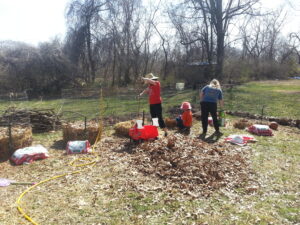 potatoes in one tower with 3 layers. The layers had soil and straw between them. We fed and watered the same way in all the towers. We also measured the wetness of the towers with a barometer so they would not be too wet or to dry. The results were still very low at the end of the season on the towers. The results from the other ways that we grew the potatoes were much better. We got good results from the potatoes boxes but not as good as the traditional ground method. We harvested around 50 lbs. with about 10 lbs. of seed potatoes in the stacking box method. With the bag and container method of growing, we harvested usually 1 to 2 lbs. of potatoes from 2 seed potato starts. All 3 of those methods had a good outcome. In our traditional growing plot which was 4 x 25 ft., we harvested 85 lbs. from planting 10 lbs. of seed potatoes. These were fingerling potatoes.
potatoes in one tower with 3 layers. The layers had soil and straw between them. We fed and watered the same way in all the towers. We also measured the wetness of the towers with a barometer so they would not be too wet or to dry. The results were still very low at the end of the season on the towers. The results from the other ways that we grew the potatoes were much better. We got good results from the potatoes boxes but not as good as the traditional ground method. We harvested around 50 lbs. with about 10 lbs. of seed potatoes in the stacking box method. With the bag and container method of growing, we harvested usually 1 to 2 lbs. of potatoes from 2 seed potato starts. All 3 of those methods had a good outcome. In our traditional growing plot which was 4 x 25 ft., we harvested 85 lbs. from planting 10 lbs. of seed potatoes. These were fingerling potatoes.
Then this last season we redid the towers using several different methods; all were 3 x 3 ft. towers. We started off with some having 1 layer, some 3 layers and some 5 layers. We used 1/2 lbs. of potatoes per layer. We were hoping for a 1/10 ratio. We experimented with 18 towers. Some of the towers were planted with soil, manure, straw; some with soil, manure and leaves; some with soil, coffee grounds and straw. Some with adding just leaves when they grew, some with adding straw as they grew, some with adding soil and straw as they grew. We used early, mid-season and late seed potatoes (6 different types) in all of our towers. The results were the same across the board. The towers just were not the best way to get a high yield for an urban farmer/grower.
However most of the other trials got good results. Please refer to our Harvest results for the last 2 years.Harvest-Results-for-SARE-Report-2016-17. This project taught us a lot about growing produce in small spaces such as an urban setting, and we were able to share the information with many people. We will continue to share the information that we gathered from our trials. We will continue implementing some of the project methods on our farm but we will not implement the ones that did not work such as the potato towers. We will also continue trying new processes that we hear about to see if they work, and to determine what is the best way for a small acreage urban farmer to harvest the most on the land that they have available.
Project Outcomes
Working with growers/farmers in the inner city of Kansas City, Mo, the Ivanhoe Neighborhood. This is one of the the lowest financial areas in Kansas City. We were able to work 6 farmers/growers to help them produce more fruit and vegetable to sell at the Ivanhoe Farmers Market. One young lady successful brought more produce to the market every week by growing produce with raised beds, pallet gardens and milk crate strawberry beds, She did put in some potato towers but had the same low results that we did. She was one of our grant recipients for the towers.